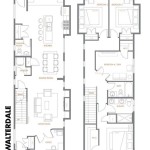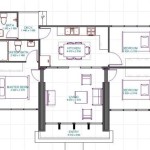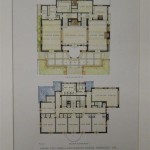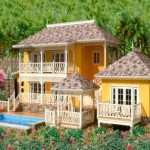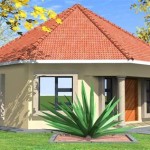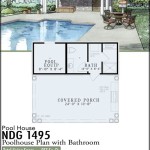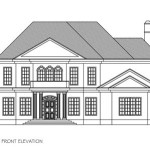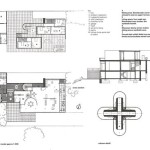Exploring the Enduring Appeal of Eichler House Plans
Eichler homes, iconic mid-century modern residences primarily found in California, continue to captivate architectural enthusiasts and homebuyers alike. The enduring appeal of these homes stems from their distinctive designs, which prioritize open spaces, natural light, and a seamless connection between the interior and exterior environments. Understanding the key features of Eichler house plans is crucial for appreciating their architectural significance and for those considering purchasing, renovating, or building homes inspired by this influential style.
Joseph Eichler, a real estate developer, envisioned creating affordable, well-designed homes accessible to middle-class families. He challenged conventional housing norms, collaborating with pioneering architects like Anshen + Allen, A. Quincy Jones, and Frederick Emmons to realize his vision. These architects translated Eichler’s ideals into tangible designs that maximized functionality and aesthetic appeal, creating homes that were both modern and livable. The resulting Eichler house plans remain a significant contribution to the architectural landscape, influencing contemporary residential design to this day.
Key Elements of Eichler House Plans: Open Floor Plans and Indoor-Outdoor Living
One of the defining characteristics of Eichler house plans is the emphasis on open floor plans. Traditional divisions between living spaces were minimized or eliminated, creating a more expansive and interconnected feel. Living rooms, dining areas, and kitchens flowed seamlessly into one another, fostering a sense of openness and promoting social interaction within the family. This design philosophy reflected a shift away from the compartmentalized layouts of earlier homes and towards a more informal and relaxed lifestyle.
The integration of indoor and outdoor spaces is another cornerstone of Eichler design. Large expanses of glass, often in the form of floor-to-ceiling windows and sliding glass doors, blurred the boundaries between the inside and outside world. This design strategy allowed abundant natural light to flood the interiors, creating bright and airy living environments. Moreover, it facilitated easy access to patios, gardens, and courtyards, encouraging residents to engage with the surrounding landscape. The incorporation of atriums, enclosed courtyards accessible from multiple rooms, further enhanced the connection with nature, bringing the outdoors directly into the heart of the home.
The use of post-and-beam construction played a crucial role in achieving these open and light-filled spaces. This structural system eliminated the need for load-bearing walls, allowing for greater flexibility in layout design and larger expanses of glass. Post-and-beam construction also contributed to the minimalist aesthetic of Eichler homes, with exposed beams and clean lines adding to their modern character.
Furthermore, radiant heating systems embedded in the concrete slab were a standard feature in many Eichler homes. This provided a comfortable and energy-efficient heating solution that complemented the open floor plans and minimalist design. The warm floors created a sense of comfort and luxury, enhancing the overall living experience.
The Significance of Materials and Design Details
The materials used in Eichler homes were carefully selected to both enhance their aesthetic appeal and minimize construction costs. Wood, glass, and concrete were the primary materials, reflecting a preference for natural and honest materials. Wood was used extensively for the post-and-beam structure, interior paneling, and cabinetry, adding warmth and texture to the homes. Large expanses of glass maximized natural light and created a visual connection with the surrounding landscape. The concrete slab floor provided a durable and low-maintenance surface that also served as the foundation for the radiant heating system.
The design details of Eichler homes were equally important in contributing to their overall aesthetic. Flat or low-pitched roofs were a common feature, further emphasizing the horizontal lines and minimalist aesthetic. Simple, clean lines characterized the architecture, avoiding ornamentation and focusing on functionality and form. Flush doors and hidden hardware contributed to the seamless and uncluttered appearance of the interiors. The careful attention to detail and the thoughtful selection of materials resulted in homes that were both aesthetically pleasing and highly functional.
Built-in storage solutions were another characteristic of Eichler house plans, reflecting a desire to maximize space and minimize clutter. Built-in cabinets, shelves, and wardrobes were integrated into the design, providing ample storage without compromising the clean lines and open feel of the interiors. This emphasis on functionality and organization contributed to the livability and practicality of Eichler homes.
The color palettes used in Eichler homes typically reflected the natural surroundings, incorporating earthy tones, muted colors, and pops of bright accents. This created a harmonious and inviting atmosphere that complemented the natural materials and open spaces. The use of color was carefully considered to enhance the overall aesthetic and create a sense of calm and serenity.
Adaptations and Modern Interpretations of Eichler House Plans
While Eichler homes remain highly desirable as originally built, many homeowners are now exploring adaptations and modern interpretations of these iconic designs. Renovations and additions are often undertaken to update the homes for contemporary living while preserving their original character. This requires a sensitive approach that respects the architectural integrity of the original design while incorporating modern amenities and conveniences.
Common renovations include updating kitchens and bathrooms, improving energy efficiency, and adding square footage. Kitchens are often redesigned to incorporate modern appliances, while bathrooms are updated with contemporary fixtures and finishes. Energy efficiency improvements can include replacing single-pane windows with energy-efficient double-pane windows, adding insulation, and upgrading the heating and cooling systems. Additions are typically designed to seamlessly integrate with the existing structure, maintaining the original aesthetic and preserving the open floor plan concept.
New construction projects are also drawing inspiration from Eichler house plans, creating modern interpretations of this iconic style. These homes often incorporate the key elements of Eichler design, such as open floor plans, large expanses of glass, and indoor-outdoor living, while also incorporating contemporary materials and technologies. The result is a fusion of mid-century modern aesthetics and modern building practices, creating homes that are both stylish and sustainable.
The enduring appeal of Eichler house plans lies in their timeless design principles and their ability to create comfortable, livable, and aesthetically pleasing homes. By understanding the key elements of these plans, architects, designers, and homeowners can continue to draw inspiration from this influential style for generations to come. The legacy of Joseph Eichler and his team of architects continues to shape the landscape of modern residential design, demonstrating the enduring power of good design and innovative thinking.
The influence of Eichler house plans can be seen in numerous contemporary homes that prioritize open spaces, natural light, and indoor-outdoor living. The principles of Eichler design have become increasingly relevant in a world that values sustainability, connectivity with nature, and a relaxed and informal lifestyle. As homeowners seek to create homes that are both beautiful and functional, the lessons of Eichler architecture remain as pertinent as ever.

Original Eichler Floor Plan Vintage House Plans Contemporary

Eichler Homes Bci Bicycle Club Of Irvine

Joseph Eichler His Work Designs Atomic Ranch

An Easy Way To Find Eichler Home Plans Network

This Is The Floor Plan For Double Gable Eichler My Favorite Design Homes Plans House

Mid Century Modern House Plans Houseplans Blog Com

The Story Behind Eichler Homes Redfin
Bringing The Eichlers Back To Bay Area Architect

Foster City Eichler Floorplans Kevin Gardiner

26 Best Eichler House Plans Ideas Homes

